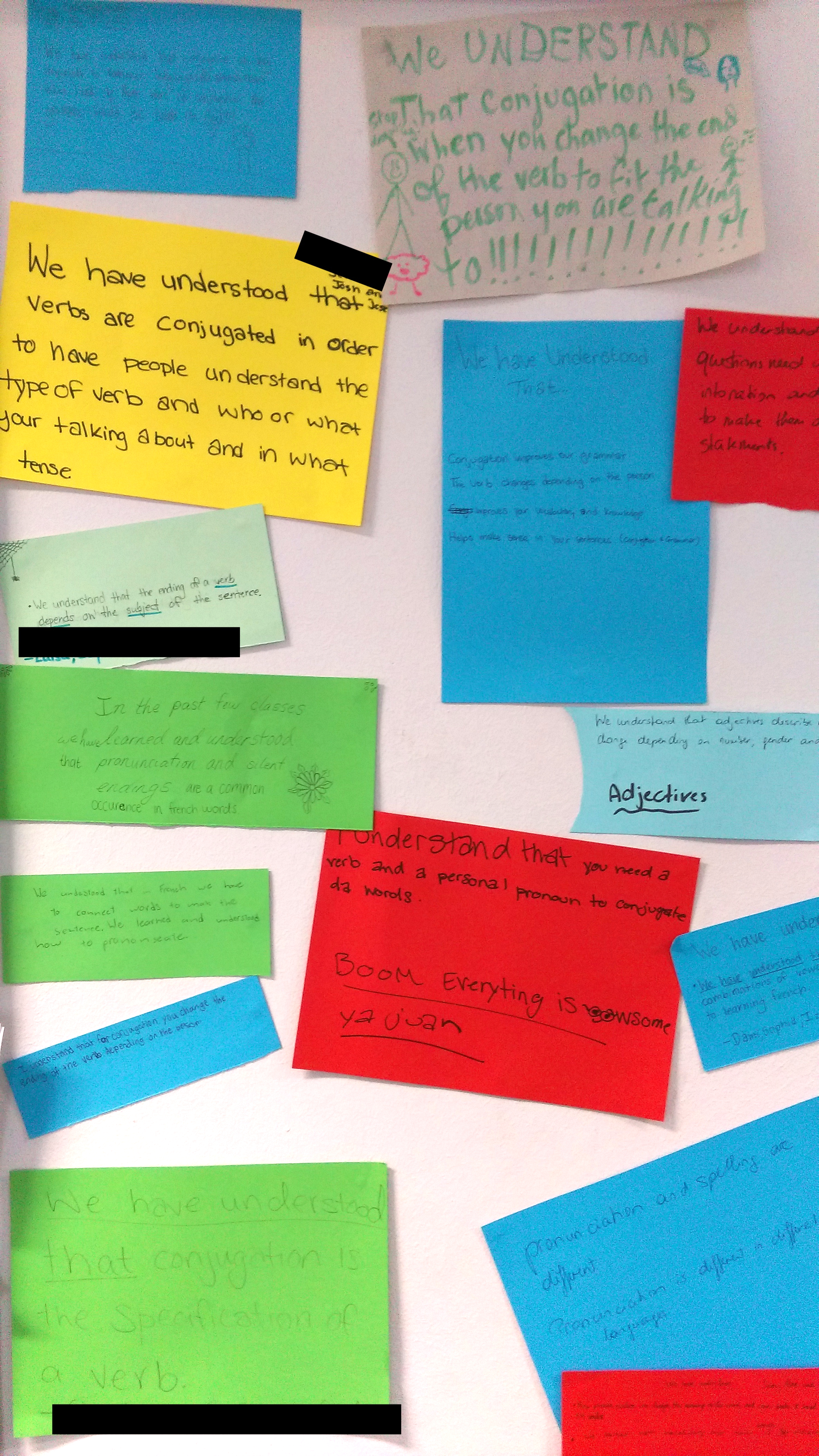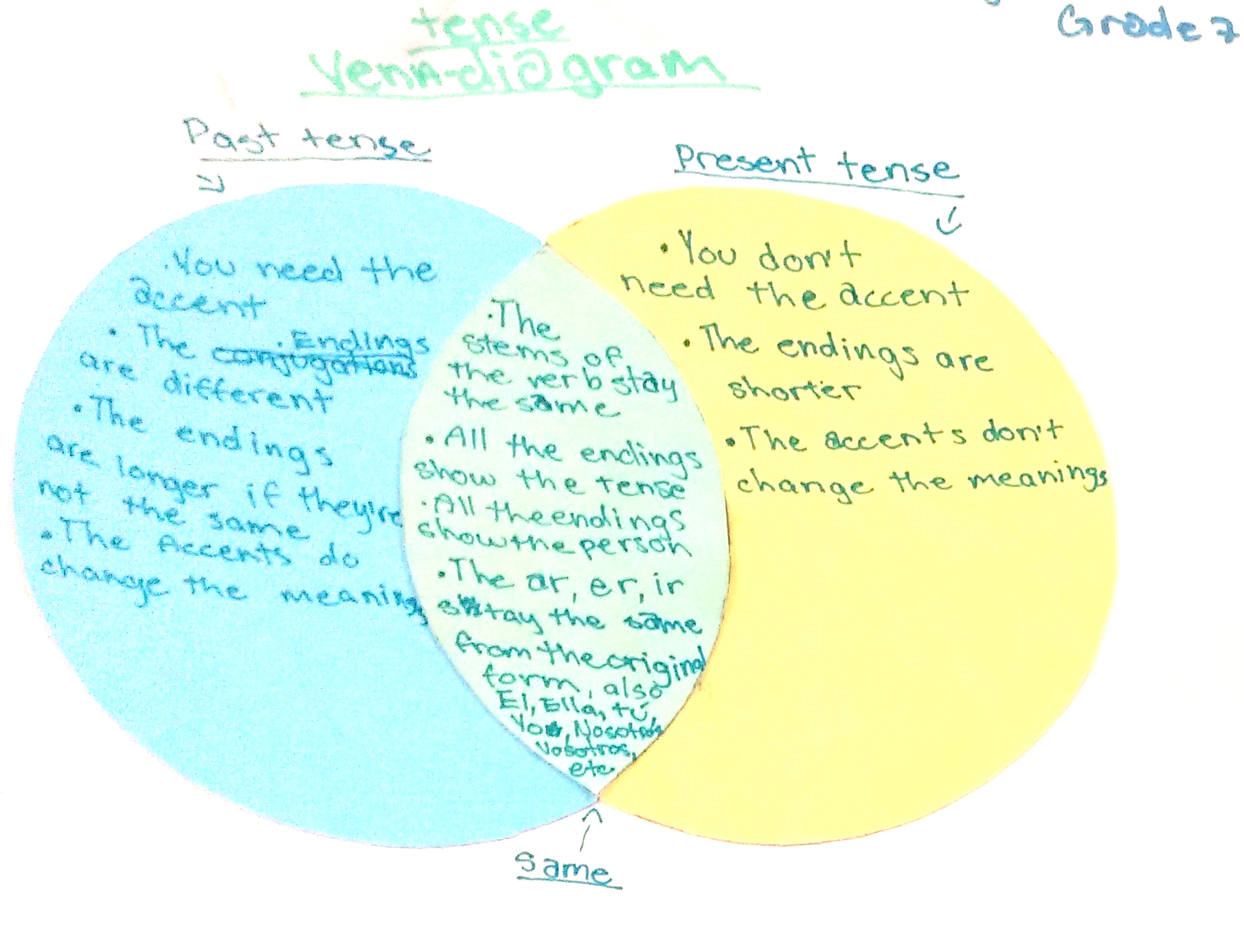by Dr. Marie-Theres Whitehead
One Teacher’s Journey to a Concept-Based Approach in World Languages
Have you ever had that one moment in your teaching when you thought: “Wow, something needs to change?” Well, mine was when a student asked me: “Why do we learn about the French Revolution in French class? Isn’t it social studies?” I was surprised that the connection was not obvious. And I knew instantly that somehow, something needed to change to enable students to make connections more naturally.
The beginning of a new way of thinking (and teaching)
This one question from my student started my journey into learning more about the transfer of knowledge, skills and concepts. My research led me to Dr. Lynn Erickson and, eventually, Dr. Lois Lanning and their Concept-Based Curriculum and Instruction. It was an eye-opener. I had finally found a way to help my students make deeper connections — in my subjects and beyond them.
At this point, I had to look into putting things into practice. I had read a few books by Lynn Erickson but wanted to dive deeper, so I asked my principal to support me attending the Erickson and Lanning CBCI Certification Institute. In return, I would lead the move to a Concept-Based and Inquiry-Based approach in World Languages at our K-8, Standards-Based curriculum school.
Trial first! Small steps with Concept-Based Inquiry in Spanish and French class

So… how to go about it?
The first thing I did was to look at some of the knowledge and skills we taught in our curriculum and the standards that we used to assess students with. I decided to “trial” Concept-Based Instruction first and redesigned some of my learning experiences using a Concept-Based Inquiry approach.
Instead of teaching conjugation, telling students what they needed to know, I gave them examples with patterns to explore and asked guiding questions to lead them to write their own Conceptual Understandings about conjugation. If you have ever learned a language with conjugation, you probably remember that this was really hard to understand! With Concept-Based Inquiry, however, students were able to write down what they had understood about conjugation at the end of the learning experience. And let me tell you, it blew my mind! One example from Grade 6 was: “I understand that for conjugation, you change the ending of a verb depending on the person.” Great, right?
To see if my new approach had really worked, I asked my students to explain the concept of conjugation to me and to other students a few months later. The reason for the wait was to check if students would remember what they had understood even after time had elapsed, which would indicate deeper, long-lasting learning. They did! They remembered the process and they were able to explain it, using the correct terminology. It showed that they hadn’t just learned it by heart, but that they had actually understood what they were doing. Success!
Let’s go big! Incorporating the Concept-Based Inquiry approach into a Standards-Based curriculum
After a series of small wins, I showed my coworkers the generalizations that students had crafted. They were excited about the successes, so we decided to adapt our Standards-Based curriculum and use a Concept-Based Inquiry approach to teach it.
By that time, I had attended the CBCI Certification Institute and was able to offer a four-part afternoon workshop to train everyone interested in Concept-Based Curriculum and Instruction. Much time was spent discussing possible ways to implement this new approach in different subjects and grade levels.
We had been using Understanding By Design (UbD) as a format for our units; therefore, knowledge and skills were already laid out and attached to the standards (Wiggins & McTighe, 2008). Here are the actions we took in our World Languages Department to move to a Concept-Based Inquiry approach:
- We decided that we needed to add concepts, as well as factual, conceptual and debatable questions and possible generalizations to our existing units.
- We then changed the assessments in each unit in order to enable students to demonstrate their understanding of the concepts and generalizations.
- We created RAFTS (Role, Audience, Format, Topic, Strong verbs/adjectives) assessments, starting with the “What / Why / How” planning tool (What will students investigate? Why will they investigate it? How will they show their understanding?) (Erickson et al., 2017, p. 57). The goal of these RAFTS assessments was to establish if students had understood the main generalization of the unit by talking/writing about it in the world language.
- We then aligned the knowledge and skills (processes) of each unit with the RAFTS and designed formative assessments to inform our teaching throughout the unit and adapt our planning.

Was it Successful?
It took us many collaborative meetings, high-level discussions, trials and errors to reach our final goal of a Concept-Based Inquiry approach in a Standards-Based curriculum. Once we had started teaching this way, we could witness students being more engaged in their learning and having fun exploring patterns. After all, language is like a puzzle, isn’t it? Most importantly, students made connections beyond the subject and remembered content more easily and for longer.
Ever since we moved to this approach, I have never again been asked about why the French Revolution was taught in French class. On the contrary, I was asked many times by students if they could use research and content from other subjects in my classes. For me and my World Languages colleagues, this was a great success! What do you think?
To learn to implement a Concept-Based approach, START HERE.
References and Further Reading
- Erickson, H. (2008). Stirring the Head, Heart, and Soul. Corwin Press.
- Erickson, H., & Lanning, L. (2013). Transitioning to Concept-Based Curriculum and Instruction. Corwin Press.
- Erickson, H., Lanning, L., & French, R. (2017). Concept-Based Curriculum and Instruction for the Thinking Classroom (2nd ed.). Corwin Teaching Essentials.
- Whitehead, M. (2018). Lead Students in Designing Their Enduring Understandings – AtlasNext. AtlasNext. Retrieved 3 July 2021, from https://www.onatlas.com/blog/students-designing-their-enduring-understandings.
- Whitehead, M. (2019). What is Concept-Based Curriculum Anyways?. AtlasNext. Retrieved 3 July 2021, from https://www.onatlas.com/blog/what-is-concept-based-curriculum-anyways.
- Wiggins, G., & McTighe, J. (2008). Understanding by Design. Association for Supervision and Curriculum Development.
About the author
 Dr. Marie-Theres Whitehead is a World Languages teacher and Concept-Based Curriculum Trainer at the International School Ho Chi Minh City. She has completed three Master’s degrees and a Doctorate from universities in Austria, France and Finland, all of them focused on French, Spanish, Education and Educational Leadership. Her passion for teaching languages and finding new ways of engaging students have led her to become a facilitator rather than a teacher in her classroom, having the students take ownership of their learning. She is keen on showing how to make connections that are not always obvious, like in her most recent Master’s thesis, where she collaborated with a classmate to analyze the possible application of a change management model from business studies with the move to online learning during the pandemic.
Dr. Marie-Theres Whitehead is a World Languages teacher and Concept-Based Curriculum Trainer at the International School Ho Chi Minh City. She has completed three Master’s degrees and a Doctorate from universities in Austria, France and Finland, all of them focused on French, Spanish, Education and Educational Leadership. Her passion for teaching languages and finding new ways of engaging students have led her to become a facilitator rather than a teacher in her classroom, having the students take ownership of their learning. She is keen on showing how to make connections that are not always obvious, like in her most recent Master’s thesis, where she collaborated with a classmate to analyze the possible application of a change management model from business studies with the move to online learning during the pandemic.
Dr. Marie-Theres Whitehead has written another post on leading students in designing their enduring understandings, linked here. You can connect with her on LinkedIn or via Twitter @mimip3006.
